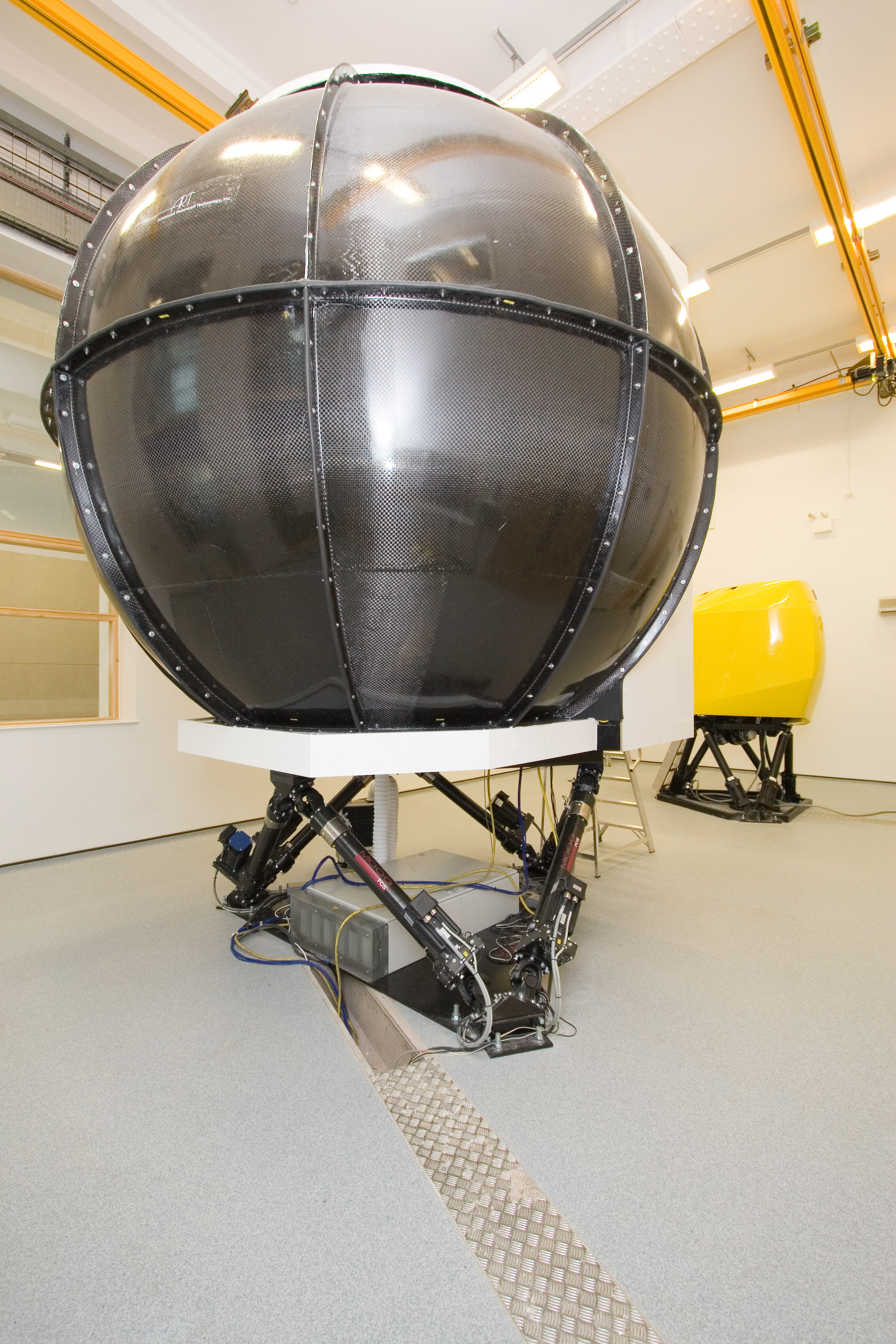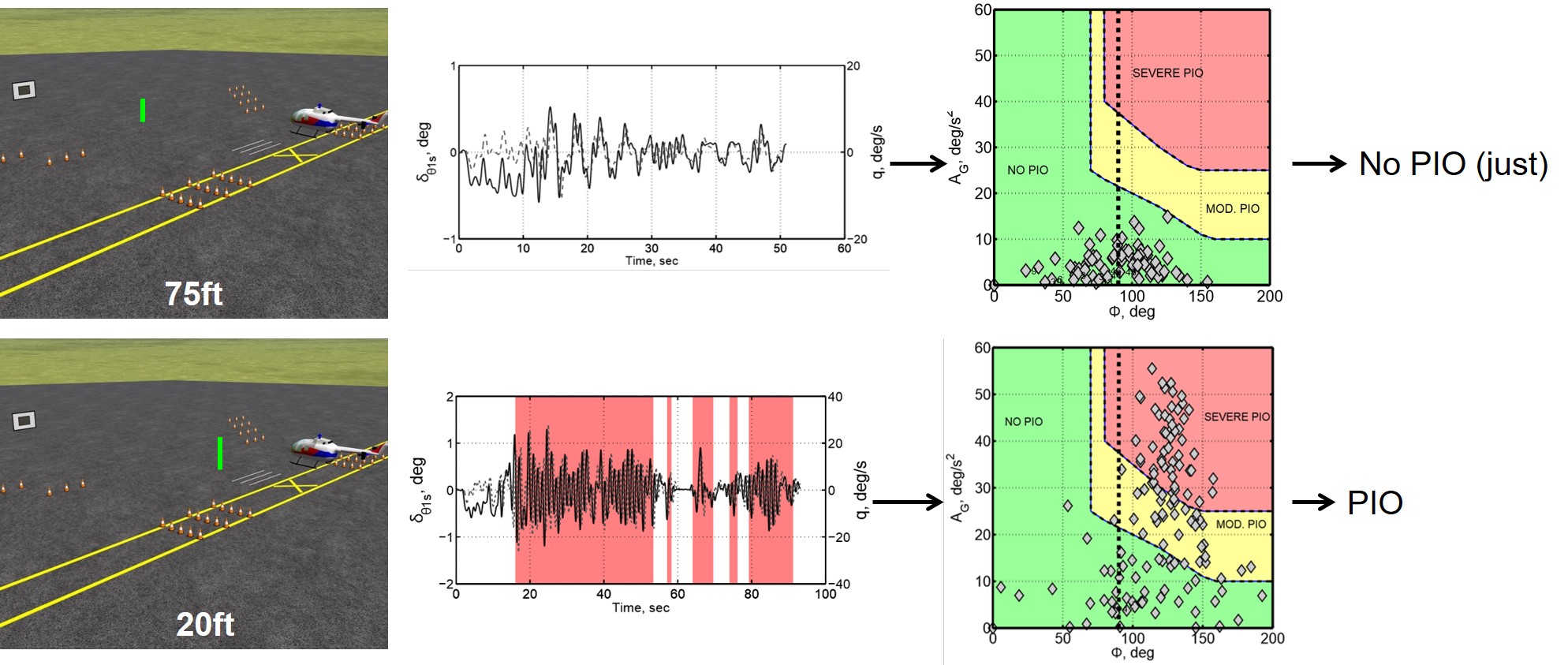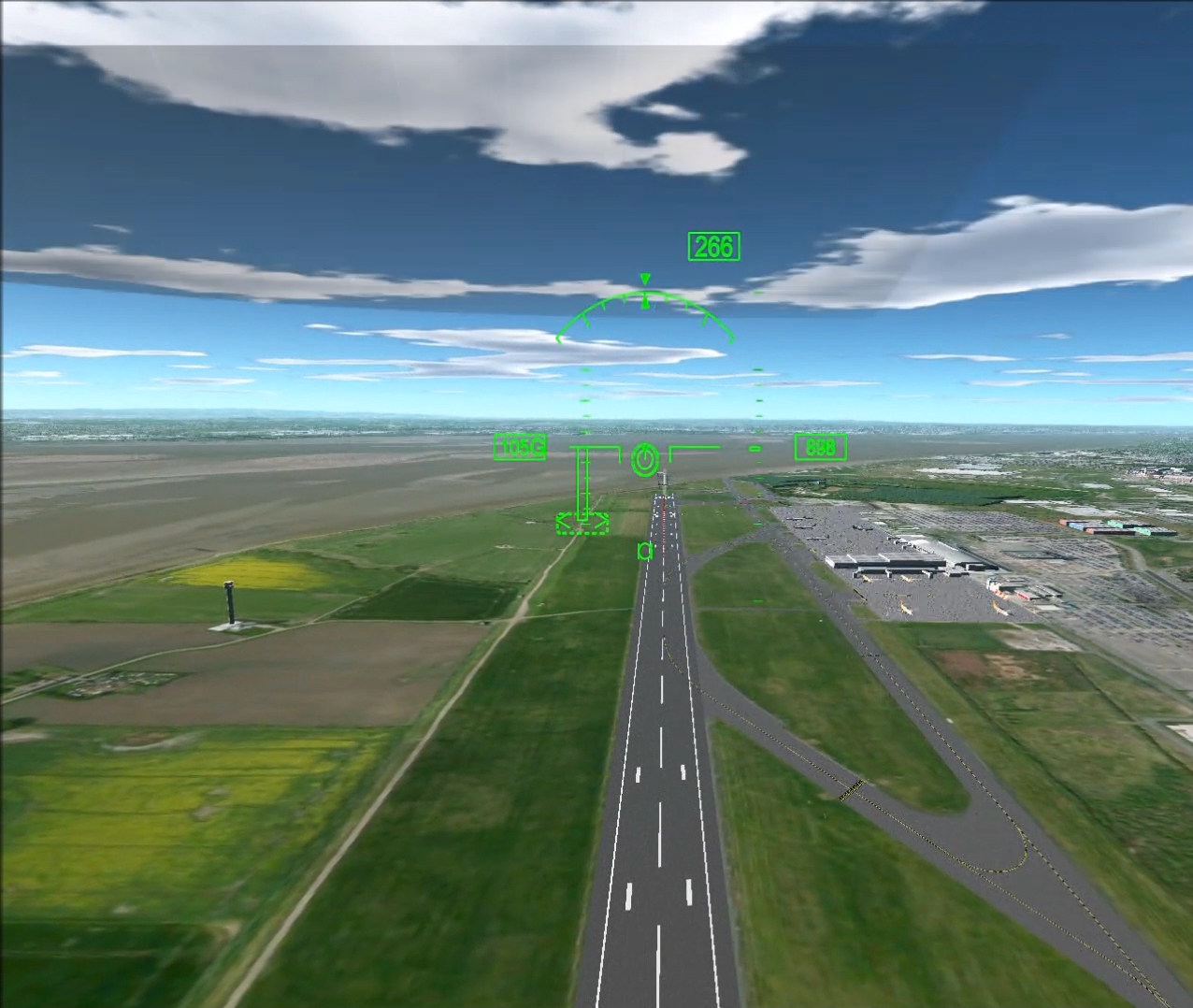Professor Mike Jump BEng PhD FHEA MRAeS
Professor of Aerospace Systems Mechanical and Aerospace Engineering
- Work email Mjump1@liverpool.ac.uk
- Personal WebsiteThe Flying Lecturer - What you can do with a PPL and some videos from my research
- About
- Research
- Publications
- Teaching
- Professional Activities
Research
Aerial Vehicle Handling Qualities

Handling Qualities (HQ) are defined as “those qualities or characteristics of an aircraft that govern the ease and precision with which a pilot is able to perform the tasks required in support of an aircraft role”. In the rotary-wing world, the HQ of an aircraft can be assessed experimentally by following the methodology of the Aeronautical Design Standard Performance Specification for Handling Qualities Requirements for Military Rotorcraft ADS-33E-PRF. This standard provides a means by which vehicle HQ can be predicted (say, during the design process) and then assessed (during the test process). As with almost all complex engineering systems, much of this process can be and is carried out in simulation prior to and alongside the creation of the real software and hardware. This requires a number of skills to be brought to the fore: modelling and simulation of airframes and systems; flight test trial conduct; communicating with and understanding test pilots as well as using and interpreting the results of HQ trials. All of these are practised and well understood here at Liverpool. I have most recently applied HQ techniques to the eVTOL concept during the EU FP7-funded myCopter project. Here , a control system was designed to give a set of vehicle response types that allowed so-called flight-naive pilots i.e. no/limited flying experience to fly a commute journey instead of taking the car. A training syllabus was devised to allow them to do this and it was found that a majority of the participants were able to learn to control the vehicle in less than 5 hours. Another part of the study conducted at Liverpool found that vehicle occupants preferred a different flight path trajectory if they were controlling vehicle compared to if the vehicle were flying automatically - an important finding for autonomous vehicle designers/manufacturers.
Adverse Rotorcraft Pilot Couplings and Pilot Modelling

Adverse pilot couplings (APCs) have been an unwelcome presence in powered manned flight since its beginning. The Aviation Safety Council describes APCs as “Inadvertent, unwanted aircraft and flight path motions that originate in anomalous interactions between the aircraft and pilot.” They have most commonly been observed as “low”-frequency (<10 rad/s) pilot–vehicle system (PVS) oscillations, which are generally referred to as pilot-induced oscillations (PIO). In current practice, the investigation of the tendency of a PVS to PIO is only begun in earnest should they be exposed during the test/evaluation or operational phases of the aircraft's life cycle. There is, of course, usually a link between vehicle Handling qualities (HQs) and possible PIO tendencies. As such, current HQ design practice and investigations should go some way to uncovering a proportion of these unwanted motions/oscillations. However, with the increasing sophistication of rotorcraft, there is a concern that the proneness of these vehicles to PIO will increase. Lessons from the fixed-wing community suggest that flight control system mode switching, quasi-linear control elements, novel control inceptor types, and nonlinear control shaping may have an adverse impact on both the PVS’s tendency to APC and the severity of those responses. Assessment of these more complex coupling triggers is likely to require more targeted evaluations that push the vehicle toward the limits of its capabilities. This approach is not necessarily typical of current HQ evaluations, where the focus relates more to “typical” operational limits. The work conducted at Liverpool addressed not only this perceived need for enhanced tools and techniques to be able to predict, detect, and alleviate APCs in future rotorcraft but also the issue of pushing the PVS to its limits. Two innovative tools were developed, one objective and one subjective, to allow pilots, engineers, and operators to evaluate the PIO susceptibility of a particular PVS. First, the phase-aggression criterion (PAC) was developed. This is an innovative but simple objective method to detect and evaluate APC events. Its utility was demonstrated using a number of specific examples. Second, the “Adverse Pilot Coupling Scale” (APCS) was created. This is a novel subjective rating scale for the assessment of a PVS’s tendency to APC. This work will be continued in the EC H2020-funded Marie-Curie ITN NITROS (https://www.nitros-ejd.org/).
Tau of Flight Control

Tau (τ) theory, which formed the basis of my PhD thesis, originates from the perception of the instantaneous time-to-contact from the available optic flow when approaching an object or surface. It provides a plausible means to model a human’s perception and action for guiding movement. The theory is based on the premise that purposeful actions are accomplished by coupling the actor’s motion with either externally or internally generated guidance sources – the so-called motion guides. Motivated by its application to a pilot’s visual perception, τ theory has already been applied to flight control and handling qualities. The rationale for this line of investigation is that the overall pilot’s goal is to overlay or close the gap between the perceived optical flow field and the required flight trajectory. The pilot then works directly with the available optical variables to achieve prospective control of the aircraft’s future trajectory. One of the first applications of τ-coupling to aircraft flight considered τ-guide control strategies during a helicopter deceleration manoeuvre close to the ground. An investigation of terrain-hugging flight reinforced the τ-based nature of the prospective control behaviour of helicopter pilots. Similar results have been found in my own work when applying τ-guide analyses to the landing flare manoeuvre of fixed-wing aircraft and to the adverse aircraft-pilot coupling phenomenon in a roll-step lateral re-positioning manoeuvre, described as boundary-avoidance-tracking. It has been suggested that pilots’ τ–based actions effectively suppress the natural aircraft dynamics and this forms part of a recent study here at Liverpool. Tau theory is currently being used as part of a joint initiative with Georgia Institute of Technology in Atlanta, U.S., to provide helicopter pilots with intuitive control and display systems to assist them in successfully executing an emergency autorotation (see here for what this looks like for real: https://www.youtube.com/watch?v=BkF4b6OuXJ0)
Research Grants
Offshore Robotics for Certification of Assets Stream B Application
ENGINEERING & PHYSICAL SCIENCES RESEARCH COUNCIL
April 2021 - March 2022
A Pilot Cueing System for Helicopter Autorotation – head-down variants and enhanced pilot testing
US ARMY RESEARCH LABORATORY (USA)
October 2020 - January 2023
PAsCAL: improving human behaviour and Public Acceptance of Connected Autonomous vehicLes
EUROPEAN COMMISSION
June 2019 - November 2022
Methods and Experiments for NOvel Rotorcraft (MENtOR)
ENGINEERING & PHYSICAL SCIENCES RESEARCH COUNCIL
March 2019 - February 2022
RAI Hub for Offshore Energy Asset Integrity Management
ENGINEERING & PHYSICAL SCIENCES RESEARCH COUNCIL
October 2017 - February 2022
EPSRC Institutional Sponsorship 2016
ENGINEERING & PHYSICAL SCIENCES RESEARCH COUNCIL
July 2016 - March 2017
UK-RAS New Capital Investment
ENGINEERING & PHYSICAL SCIENCES RESEARCH COUNCIL
October 2016 - March 2017
Network for Innovative Training on ROtorcraft Safety - NITROS
EUROPEAN COMMISSION
November 2016 - April 2022
Aircraft and rotorcraft pilot couplings - tools and techniques for alleviation and detection (ARISTOTEL).
EUROPEAN COMMISSION
October 2010 - September 2013
Human-Machine Co-operation in Robotics and Autonomous Systems: Simulation, Safety and Verification Equipment Purchase.
ENGINEERING & PHYSICAL SCIENCES RESEARCH COUNCIL
July 2013 - October 2014
Enabling Technologies for Personal Aerial Vehicles (MYCOPTER).
EUROPEAN COMMISSION
January 2011 - December 2014
Research Collaborations
Michael Fisher
Project: VEC Work Package 3
Internal
Validation & Verification of an Agent to Fly an Aircraft
Paolo Paoletti
Internal
PhD Supervision
Jason Ralph
Internal
Phase 1 AMS-DERISC project
Mark White, Ieuan Owen
Internal
PhD Supervision
Jacqueline Wheatcroft
Internal
MSc Project supervision leading to Dstl-funded PhD studentship
Prof. David N. Lee
External: The University of Edinburgh
Expert advisor on Prospective Sky Guides research project